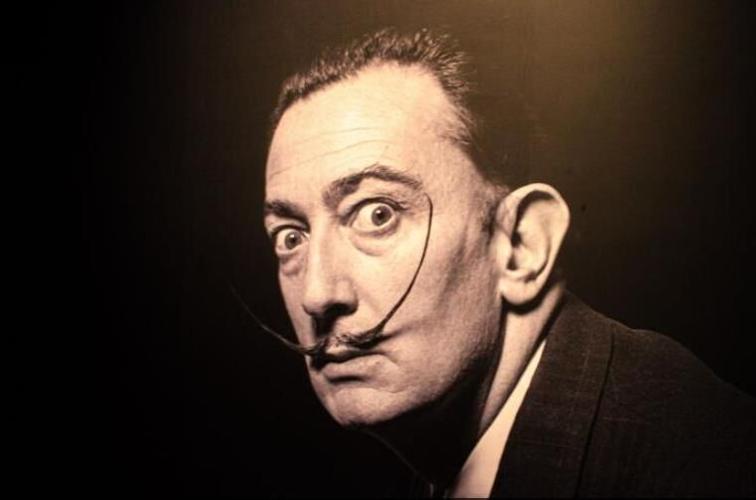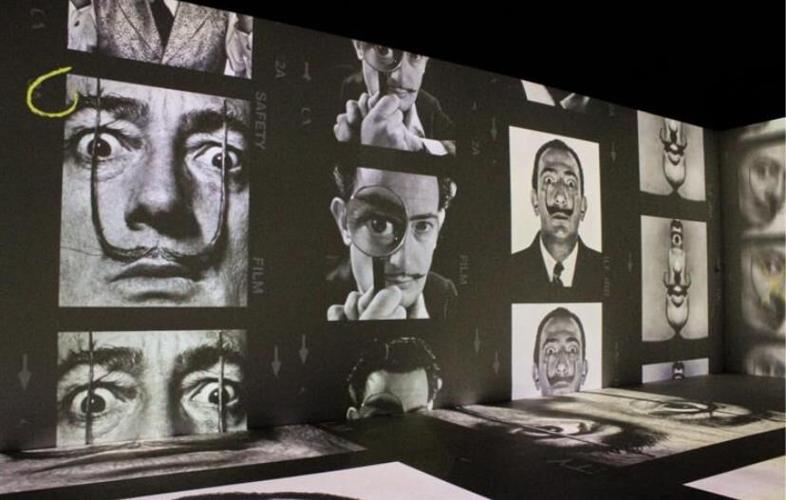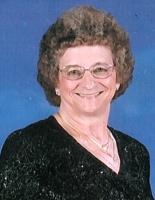Three escalators up to the fourth floor and around the corner, Newfields is turning back the melted clocks and dropping visitors into some of Salvador Dali’s most influential and dreamlike creations.
Colors light up panels that stretch all around — and even under visitors’ feet — as lobster rotary phones, melting clocks and elephants on stilt legs move up and down and side to side. Each image stays just long enough for viewers to begin to get a sense of what the artist was thinking — something Jonathan Berger, Newfields’ vice president of marketing and external affairs, says is what makes exhibits like this so special.
“It’s all about looking at art differently,” Berger said. “And we understand that digital art is evolving, and this will be a form of art — it wasn’t that long ago photography wasn’t considered a form of art.”
“Dali Alive” follows the first two exhibitions of THE LUME Indianapolis at Newfields, which featured Claude Monet and Vincent Van Gogh. This edition features almost 120 projectors across 30,000 square feet spanning the entire fourth floor of the art museum and will be the largest continuous exhibition in Newfields history, lasting until March 2025. “Dali Alive” was co-created and produced by Grande Experiences in Australia and the Dali Museum in St. Petersburg, Florida.
The exhibit also includes work from the Indianapolis Museum of Art’s permanent collection, including four original Dali watercolors that have been in storage for nearly 50 years.
Berger said he thinks “Dalí Alive” is going to bring in a different crowd, one that’s excited to see the surrealistic dreamscapes Dalí imagined.
Well known as a Spanish painter and printmaker with a curled mustache, Salvador Dalí was inspired by Sigmund Freud’s dream theory, which said all dreams have meaning. Dalí, on the path to discovering the meaning behind his own dreams, often induced hallucinations and brought his odd imaginings to life through art.
“That’s one of the things that I love about walking into the space,” Berger said. “It’s like you’re walking into Dalí’s mind and seeing these paintings play out in a fully immersive experience.”
Berger said THE LUME can make it less intimidating for people to walk through the museum and learn about art.
“It acts as an introduction into art, and they’ve probably seen melting clocks and this guy with a mustache but maybe didn’t associate it with Salvador Dalí,” he said. “We’ve kind of tricked you into being an art lover at the end … Doing that demystifies a museum in that way.”
A highlight from THE LUME, Berger said, is seeing how many kids come through, looking around in awe.
“I’m a new parent myself,” he said, and he thinks “Dali Alive” can introduce children to art “in a way that they can appreciate it and their attention can be kind of accommodated.”
Guests can continue viewing the artists’ surrealist projections as they round the corner to grab a bite to eat or snag something to drink at the café and bar. Display cases on both sides of the counter house empanadas and other Spanish-inspired delicacies Dalí might have enjoyed, which visitors can try now too.
Newfields’ Chef Patrick Russ said the museum wanted to have more of a food presence with “Dalí Alive” than the two previous exhibitions of Monet and Van Gogh post-pandemic.
“We wanted to do something that was fun, representational of Dali in some sort of way,” Russ said. “We wanted to offer some cool type of food that gives you the Spanish experience but could also fill you up.”
Lindsay Jo Whirley, assistant director of culinary operations, said, “[The El Mercado Surreal is] designed to be quick, just like it would be like you’re in Spain. You walk by, maybe you weren’t even hungry, but we wanted people to eat with their eyes in here — they’re fully immersed.”
Whirley said aside from bringing a little Spain to visitors, Newfields is also bringing a taste of Dalí (literally) with an adaptation of a drink he created and sipped while making his art.
“This is my adaptation of Dali’s recipe; it’s not impossible, but it’s near impossible to fully recreate the way he envisioned,” Newfields mixologist Caleb Gwin said. “I’ve had to make my own twist on the beverage, which is why we’re not calling it the Casanova — this is the Canvasnova.”
Gwin garnished the cloudy drink with orange peel and a pinch of cayenne pepper. “I describe it as bold, surreal, just like Dalí himself. It’s unique,” he said. “I think specifically, just like Dalí tried to do with his art — it’s not something he’s trying to make for everyone.”
After leaving the café, visitors can enter an activity area to create their own surrealistic digital art or pose with misshapen clocks and floating figures dangling from the ceiling as they take selfies in the Dalí-esque photo booths.
Maggie Ordon, an interpretation planner, said the Newfields lab and interpretation team developed the “Dream it, draw it, AI it” digital activity so that visitors could have the experience of physically interacting with the art, giving them a unique souvenir, which you can email to yourself.
“I think we like to say here that Salvador Dalí would probably love THE LUME experience because he was all about these bizarre, intense, immersive experiences,” Ordon said. “It’s all about creating experiences that people can feel immersed in so they get that whole-body, multi-sensory experience.”
Once guests finish in the activity space, they’re back to the traditional museum experience, where they can view four original works by the artist up close and in person.
Dalí sketched and painted these four watercolor designs for an opera called “The Spanish Lady and the Roman Cavalier.” This is the first time they’ll be seen by the public in 45 years.



















Commented
Sorry, there are no recent results for popular commented articles.